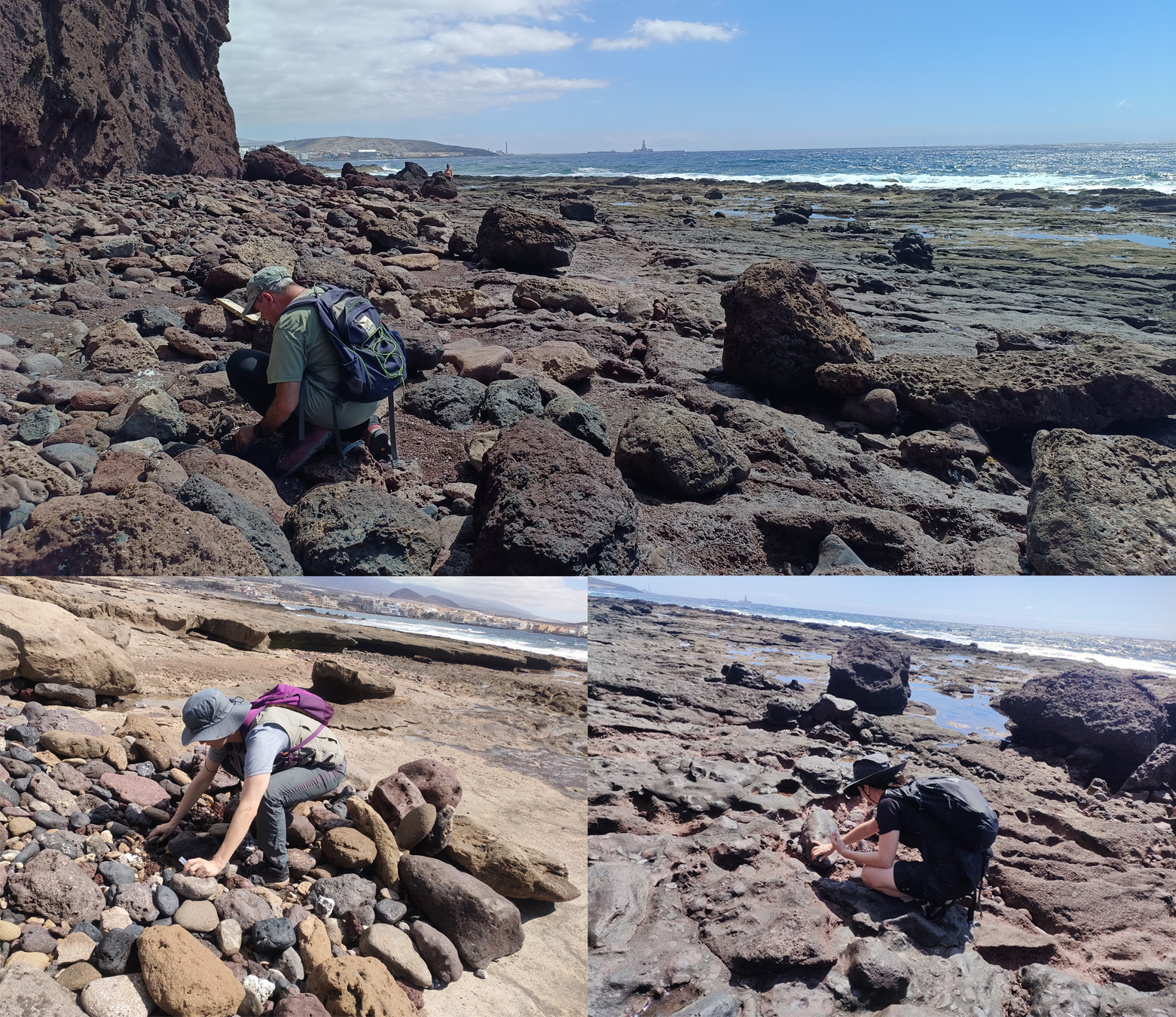A new reference genome for the conservation of coastal spider species in the face of anthropogenic change
Julio Rozas (Universitat de Barcelona, Barcelona, Spain); Sara Guirao-Rico (Universitat de
Barcelona, Barcelona, Spain); Nuria Macías-Hernández (Universidad de La Laguna, Tenerife, Spain).
In April 2024, the project “A new reference genome for the conservation of coastal species in the face of anthropogenic change” was selected in the ERGA-BGE call “Enhancing Biodiversity Genomics Applications for Ongoing Case Studies”. The project involves researchers from the University of Barcelona (Barcelona, Spain) and the University of La Laguna (Canary Islands, Spain). This initiative is dedicated to generating a high-quality reference genome for D. curvisetae. This resource will significantly enhance our understanding of the genomic basis of adaptation and the mechanisms driving genetic diversity across species. The project, led by Prof. Julio Rozas, Dr. Sara Guirao-Rico, and Dr. Nuria Macías-Hernández, will accelerate the use of new high-quality reference genomes relevant for understanding, monitoring, and conserving biodiversity.
Research activities include sampling campaigns to collect D. curvisetae specimens from the coasts of Tenerife and the generation of a genome assembly and annotation. The group has a consolidated line of research that focuses on the radiation of animal species on oceanic islands based on the case study of the adaptive radiation of the spider genus Dysdera in the Canary Islands. Previous research results include the identification of molecular targets of adaptive convergence in phenotypic traits related to trophic specialization in these islands. The current project is generating new reference genomes at the chromosome level for species that inhabit the intertidal zones of pebble beaches on seashores.
Species’ photo: Pedro Oromí
This type of habitat is unique among the species of this genus, and only reported in some Macaronesian species. It represents a new case of ecological shift found in the genus Dysdera. This provides a great opportunity to investigate habitat specialization as a novel driver of species radiation, but more importantly, to envisage how these highly specialized organisms adapt to habitats particularly vulnerable to anthropogenic effects. The coastal areas of the Canary Islands have been one of the most degraded habitats in the last thirty years, mainly due to urban development, and this trend is still increasing.
This project will be the benchmark to boost knowledge of the genomic basis of convergent adaptation and the generation and maintenance of diversity associated with insular radiations. In addition, the results of this project will be important for predicting how factors such as coastal degradation, sea level rise, desalination, and other human-induced impacts will affect these organisms and their adaptive potential. Using the genomic information generated by this project, conservation initiatives can be implemented for a variety of species or evolutionary lineages exhibiting characteristics peculiar to coastal ecosystems that have traditionally been overlooked by conservation programs.

Members of the research team Julio Rozas, Sara Guiaro-Rico and Nuria Macías-Hernández look for spiders among the rocky sea shore of Tenerife. Photos by Julio Rozas and Sara Guirao-Rico.
The leading researchers of this project would like to extend their gratitude to all the members of the University of Barcelona and the University of La Laguna research team for their commitment and dedication, as well as to all the collaborators who participated in the sampling campaign. This project received funding from the European Union under the European Union’s Horizon Europe research and innovation programme, co-funded by the Swiss Government and the British Government, with additional support from national research grants. We also thank BGE-ERGA for providing a collaborative platform that made this research possible.
About the Authors
Prof. Julio Rozas, Dr. Sara Guirao-Rico, and Dr. Nuria Macías-Hernández are part of ERGA SPAIN. You can find more information about their research at https://www.ub.edu/molevol/julio/ and https://portalciencia.ull.es/grupos/6542/detalle
Photo credits: Pedro Oromí, Julio Rozas and Sara Guirao-Rico
*Header image: Vadim Pisarenco, Silvia García and Marta Olivé look for spiders among the rocky sea shore of Tenerife. Photos by Julio Rozas and Sara Guirao-Rico.




